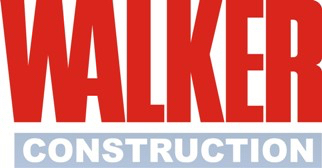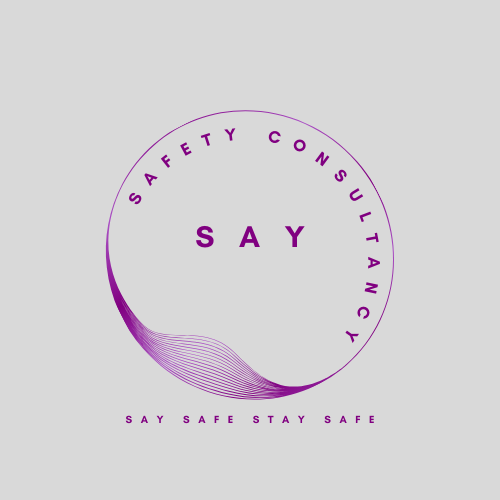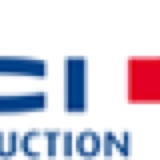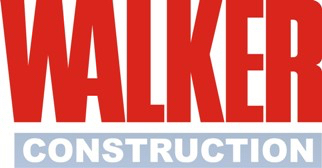Title Page
-
Location
-
Conducted on
-
Division/Department
-
Contract No/Project
-
External Org/Client
-
Manager/Supervisor
-
Person Conducting Inspection
-
Sub-Division
-
Finish Date/Time
-
Gang No
-
Type of Works
-
Site Staff Seen
-
CDM Arrangements - Evidence of Planning. Project management plan current and updated. Legal appointments nominated. F10 if relevant. Pre-Construction information. Evidence of coordination and communication between Design team and Contractor. Project team details. Management arrangements. Refer L153 guidance to Regs.
- Not Discussed N/D
- Not Present N/P
- Not Applicable N/A
- Site Stop Notice
- Activity Stop Notice
- Improvements Required
- Best Practice
- Exemplary
-
Injury and Near Miss incidents - Records on site? Themes and trends. Remedial Actions taken. All injuries and near misses to be reported onto Entropy.
- Not Discussed N/D
- Not Present N/P
- Not Applicable N/A
- Site Stop Notice
- Activity Stop Notice
- Improvements Required
- Best Practice
- Exemplary
-
Compliance Inspections - Copies of previous inspections, BSI audits.
- Not Discussed N/D
- Not Present N/P
- Not Applicable N/A
- Site Stop Notice
- Activity Stop Notice
- Improvements Required
- Best Practice
- Exemplary
-
Plant & work equipment - Condition. Appropriate items for activities. Checks, inspections and Log books, delivery / maintenance records. & PUWER. (Record daily inspections of ladders, harnesses and power tools when applicable).
- Not Discussed N/D
- Not Present N/P
- Not Applicable N/A
- Site Stop Notice
- Activity Stop Notice
- Improvements Required
- Best Practice
- Exemplary
-
PPE and RPE - Availability. Condition. Appropriateness. Use. Compliance with relevant standards. Face Fit. Storage and Maintenance. Refer PPE Regs 1992 and L25
- Not Discussed N/D
- Not Present N/P
- Not Applicable N/A
- Site Stop Notice
- Activity Stop Notice
- Improvements Required
- Best Practice
- Exemplary
-
Chemical Agents / COSHH - Hierarchy of controls, Use, Transport, Storage and Disposal. COSHH assessments / MSDS in place at site. Refer COSHH 2002 & L5.
- Not Discussed N/D
- Not Present N/P
- Not Applicable N/A
- Site Stop Notice
- Activity Stop Notice
- Improvements Required
- Best Practice
- Exemplary
-
Physical Agents – Noise and Vibration - Exposure levels, Awareness of controls, compliance with requirements (rotation of tasks, PPE etc), marked info on plant / equipment, maintenance & condition of plant and equipment. Trigger time monitoring for vulnerable ops, existing health conditions managed appropriately. Records of tests / OH referrals / Risk assessments for individuals. Protection of public (noise only). Refer Control of Noise at Work Regs 2005, L108, Control of Vibration at Work regs 2005 and INDG175.
- Not Discussed N/D
- Not Present N/P
- Not Applicable N/A
- Site Stop Notice
- Activity Stop Notice
- Improvements Required
- Best Practice
- Exemplary
-
Respiratory Risk and other Health issues - Elimination or control at source. Collective controls over individual. OHS recommendations being adhered to? RAs to cover heat / cold / sunburn etc. RPE. Face Fit. HSG53. Lung function and skin checks taking place where necessary. Dust or soot control/suppression, preferable on-tool extraction where possible.
- Not Discussed N/D
- Not Present N/P
- Not Applicable N/A
- Site Stop Notice
- Activity Stop Notice
- Improvements Required
- Best Practice
- Exemplary
-
Lifting Operations – Planning, Arrangements, Risk Assessment, Lift Plans, Appointed Persons, Contract Lifts, Marking of equipment, Inspections and records. Refer LOLER and L113.
- Not Discussed N/D
- Not Present N/P
- Not Applicable N/A
- Site Stop Notice
- Activity Stop Notice
- Improvements Required
- Best Practice
- Exemplary
-
Temporary works and excavations – TW Coordinators in place. Evidence of Design for TW. Detail in Site Management Plan and communicated to site ops. BS5975. Excavation, Permits in place. Checks being completed. Access avoided where possible. Access/Egress/Emergency rescue if necessary. Shoring / support. Barriers and signage. Ground conditions. Previous land use / contamination. Adjacent structures safe. Best Practice followed. SWP4. HSG185. CITB GE700 Vol D.
- Not Discussed N/D
- Not Present N/P
- Not Applicable N/A
- Site Stop Notice
- Activity Stop Notice
- Improvements Required
- Best Practice
- Exemplary
-
Work at Height/falls risks – Avoidance, Planning, RAMS, Collective controls over individual ones. Appropriate equipment eg ladders, towers, platforms, mobile equipment, aircraft access steps, harnesses etc ALL to be checked and recorded. Awareness of influencing factors such as weather or adverse events/collisions/explosions etc. Trained and competent people. Statutory checks. Aerial hazards such as ceilings / OH Cables / trees etc. refer Work at Height Regs 2005, INDG401
- Not Discussed N/D
- Not Present N/P
- Not Applicable N/A
- Site Stop Notice
- Activity Stop Notice
- Improvements Required
- Best Practice
- Exemplary
-
Fire, First Aid & Emergency Procedures – Listed in appropriate section of Site management documents. Levels commensurate with residual risks associated with site tasks. Individuals named. Arrangements and facilities in place and checked, notices / displays etc. Tests and alarms checked. Suitable and sufficient cover for first aid.
- Not Discussed N/D
- Not Present N/P
- Not Applicable N/A
- Site Stop Notice
- Activity Stop Notice
- Improvements Required
- Best Practice
- Exemplary
-
Utilities & Services - Identified at Planning stage for any works likely to affect UG or OH services. Avoid where possible. List control measures. Contact with service or utility owners prior to works commencing. Locate tips or storage areas / compounds away from OHCs. Strict adherence to control measures where close proximity cannot be avoided. Evidence of correct plant & equipment for working in vicinity of OH & UG services. C2s and Scan for work near UGs. Plan, Locate, Dig. Permits for high severity works List emergency procedures. HSEGS6 for OHCs, HSG47 for UGs. SWP2 and 3.GE700 Vol D.
- Not Discussed N/D
- Not Present N/P
- Not Applicable N/A
- Site Stop Notice
- Activity Stop Notice
- Improvements Required
- Best Practice
- Exemplary
-
Site security, Signage and Public Protection – Segregation of Public from works by physical measures / barriers. Checks and records of integrity/repair. Condition of barriers / signage. Clear messages / info points. Directions for visitors. Instructions for site traffic. Consider such items as debris screens, acoustic panels and rubble chutes for public protection. Also solid fencing / viewing areas where unwanted public viewing to be discouraged. Provision of out-of-hours security arrangements / patrols / CCTV / alarms. Site plant and equipment locked / immobilised. Particular attention when working in occupied premises.
- Not Discussed N/D
- Not Present N/P
- Not Applicable N/A
- Site Stop Notice
- Activity Stop Notice
- Improvements Required
- Best Practice
- Exemplary
-
Traffic Management – Evidence of consideration at planning stage. Consider all types of traffic, vehicular, pedestrian, site vehicles and plant movements. Segregate wherever possible. Eliminate vehicular traffic from works, or control with appropriate means. Reduce speeds wherever possible. Consider convoy system. Signage to be clean, clear and in accordance with Ch8 TSRGD. TM plan included in Site Management Plan. Road closure / diversion / signage schedule clear, correct and adhered to. Where Stop & Go, RA and Permissions in place. S&G boards for TTL failure. Regular daily checks carried out and recorded. Separate routes for site traffic and site workers. Physical barriers, signage clear and in place. Traffic route condition (surface / slips/ trips etc). Red Book, Ch8, SWP1. Do not ignore PEDESTRIAN traffic. Consider special needs groups such limited vision, wheelchair users etc.
- Not Discussed N/D
- Not Present N/P
- Not Applicable N/A
- Site Stop Notice
- Activity Stop Notice
- Improvements Required
- Best Practice
- Exemplary
-
Induction, Training & Competency – Evidence of (signed for) site specific inductions, site safety policies, communication of daily hazards / risk assessments, arrangements for visitors / contractors. Offer of induction to visiting safety adviser. Training records held for individuals, competency cards carried appropriate to the task being carried out. CSCS. CPCS. EORS. Etc. Current. Evidence of competence and training being applied to tasks. Enhanced supervision for inexperienced workers.
- Not Discussed N/D
- Not Present N/P
- Not Applicable N/A
- Site Stop Notice
- Activity Stop Notice
- Improvements Required
- Best Practice
- Exemplary
-
Contractor Management and Procurement – Is the contractor on the preferred list? Contractor working with / without CORSERV supervision or input. Appropriate level of supervision (SMSTS).Arrangements for communication with or liaison between Contractor and CORSERV / other Contractors. Evidence of written instruction, reporting arrangements.
- Not Discussed N/D
- Not Present N/P
- Not Applicable N/A
- Site Stop Notice
- Activity Stop Notice
- Improvements Required
- Best Practice
- Exemplary
-
Welfare facilities – Appropriate to the task. Identified and provided in good time. Clean. Serviced and maintained. Adequate for numbers of workers on site. Accessible when needed. If shared facilities ensure written permission from owner. Workplace Health Safety and Welfare Regs 1992.
- Not Discussed N/D
- Not Present N/P
- Not Applicable N/A
- Site Stop Notice
- Activity Stop Notice
- Improvements Required
- Best Practice
- Exemplary
-
Premises Management – Visitor information and records. Maintenance of fixtures, vent systems, wiring certificates, asbestos surveys, premises log book. Emergency procedures. Inspection records. Policies, procedures and relevant persons details on display.
- Not Discussed N/D
- Not Present N/P
- Not Applicable N/A
- Site Stop Notice
- Activity Stop Notice
- Improvements Required
- Best Practice
- Exemplary
-
RAMS, Registers and Permits – Suitable and Sufficient, ie do they cover all of the activities being undertaken, adopt the 5 steps to risk assessment approach, initial and residual risk ratings, appropriate control measures. Signed, dated. Permits within date, specific to the activity. Evidence of communication of control measures. Using appropriate forms. Easily understandable. Permit registers in place and current. Asbestos registers being used for appropriate works.
- Not Discussed N/D
- Not Present N/P
- Not Applicable N/A
- Site Stop Notice
- Activity Stop Notice
- Improvements Required
- Best Practice
- Exemplary
-
Process awareness, SWPs and Behavioural – Understanding of correct techniques and compliance with same eg manual handling as per training guidance. Safety evident in all aspects of the behaviours on site and not just when entering high risk areas. Knowledge of and access to SWPs and SOPs.
- Not Discussed N/D
- Not Present N/P
- Not Applicable N/A
- Site Stop Notice
- Activity Stop Notice
- Improvements Required
- Best Practice
- Exemplary
-
Lone working & special groups – Specific risk assessment for lone activity. Categorisation of activity as H,M or L risk. Lone working device present? Awareness of Device procedure, or in the absence of device emergency procedure / contact / buddy arrangements. Areas of non-signal coverage. Lone Worker procedure communicated to relevant staff.
- Not Discussed N/D
- Not Present N/P
- Not Applicable N/A
- Site Stop Notice
- Activity Stop Notice
- Improvements Required
- Best Practice
- Exemplary
-
Confined spaces – Specific Risk Assessment. Access Permit. Suitability of controls.. Compliance with Permit arrangements. Emergency procedures. Hierarchy of controls adopted. SWP58 & Confined Spaces Regs 1997. HSE Approved Code of Practice L101 – Safe Work in Confined Spaces. INDG 258 Confined Spaces. Company guidance on Confined Space Working
- Not Discussed N/D
- Not Present N/P
- Not Applicable N/A
- Site Stop Notice
- Activity Stop Notice
- Improvements Required
- Best Practice
- Exemplary
-
Manual Handling & Ergonomics – Adherence to best practice. Following correct techniques Pristine Condition / NBTC training. Risk Assessment leading to Elimination of handling when possible. Adopt mechanical aids. Keep transport paths clear, tidy. Limiting load weights. Sharing lifting activities BUT correct techniques as appropriate. Site layout and ergonomics such that unavoidable handling is limited to short distances, lowest heights etc. Consider LOAD, INDIVIDUAL, TASK, ENVIRONMENT. There are many guidance documents, the most significant being MHOR1992 and L23 Guidance on Regulations. All operatives (including agency staff) to complete MH training.
- Not Discussed N/D
- Not Present N/P
- Not Applicable N/A
- Site Stop Notice
- Activity Stop Notice
- Improvements Required
- Best Practice
- Exemplary
-
Site Order / Housekeeping / Storage (incl HFLs and Refuelling) – Tidy site is a safe site. First Impressions will reveal much about the site management. Clean, Orderly, clear walkways, elimination of conditions which lead to slips, trips and falls. Segregation of materials. Low stacks rather than high. Racking safe / inspected. Dust reduced to minimal levels. Regular maintenance arrangements. Secure / lockable facilities. Compliance with COSHH as appropriate. Refer Workplace (Health, Safety & Welfare) Regs 1992.
- Not Discussed N/D
- Not Present N/P
- Not Applicable N/A
- Site Stop Notice
- Activity Stop Notice
- Improvements Required
- Best Practice
- Exemplary
-
Safety Signs / Notices – Clean, clear, concise message. Appropriate to situation. HSE / CDM compliant. Warning, Advisory and Mandatory. Current/in-date. Reflective materials.
- Not Discussed N/D
- Not Present N/P
- Not Applicable N/A
- Site Stop Notice
- Activity Stop Notice
- Improvements Required
- Best Practice
- Exemplary
-
Drivers Logs - Daily completion, signed, defects raised, actioned.
- Not Discussed N/D
- Not Present N/P
- Not Applicable N/A
- Site Stop Notice
- Activity Stop Notice
- Improvements Required
- Best Practice
- Exemplary
-
Environment, Waste and Pollution - Waste: • Segregation of different waste types, especially hazardous and non-hazardous wastes. • Controlled Waste Transfer Notes or Hazardous Consignment Note correctly completed. • Waste areas kept tidy and skips/bins well labelled. • Waste exemptions registered with the EA for sites using, storing, treating or depositing waste. Pollution: • Spill kits available (including in vehicles) and spill procedure communicated to all. • Relevant consents/permits/exemptions in place for working in and around water or discharging from site. • Statutory nuisance control measures in place e.g. dust, odour, vibration, light, mud on roads. • Appropriate site drainage and management of surface run-off. • Appropriate chemical/fuel storage and concrete wash-out facilities. • Good site cleanliness e.g. fly tipping and litter. Ecology: • Protected species identified and controls in place. • Invasive species identified and controls in place. • Biosecurity controls in place where relevant e.g. work involving trees infected with disease. • Statutory environmental designations identified and appropriately managed e.g. Sites of Special Scientific Interest (SSSI) or Tree Preservation Order (TPO). • Protection of sites environmental assets & features e.g. fencing to protect tree root zones. Other: • Appropriate risk assessment, hazard identification and staff site inductions. • Site environmental management systems and documentation. • Implementation of environmental opportunities e.g. installation of nest boxes • Consideration of sustainability, energy & emissions. • Environmental monitoring & record keeping where relevant.
- Not Discussed N/D
- Not Present N/P
- Not Applicable N/A
- Site Stop Notice
- Activity Stop Notice
- Improvements Required
- Best Practice
- Exemplary
-
Engagement, Briefing and TBTs – Evidence of communication of safety info. Workforce feedback in place i.e. Make a Difference campaign and near miss reporting campaign. Incident / near miss reporting. Open and proactive attitude to safety and continuous improvement.
- Not Discussed N/D
- Not Present N/P
- Not Applicable N/A
- Site Stop Notice
- Activity Stop Notice
- Improvements Required
- Best Practice
- Exemplary
Observations
-
Positive and negative observations













